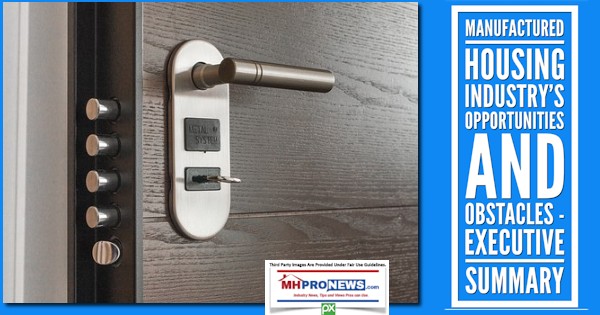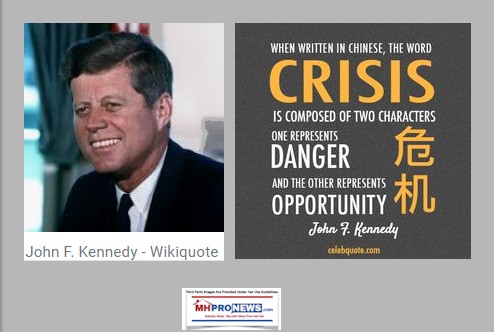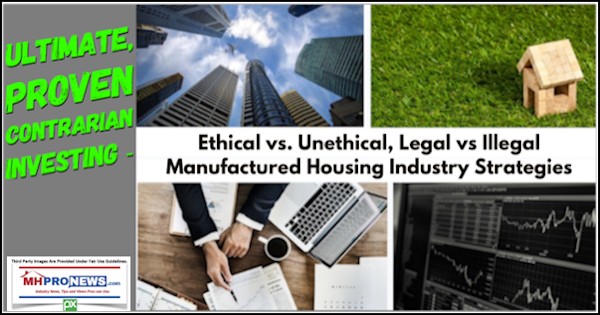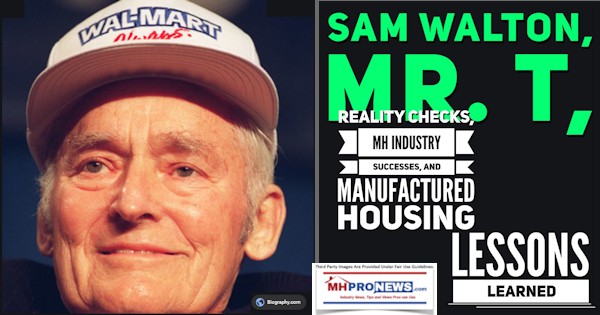
Things are often not what they seem to be. People often have notions other than reality.
· Those two statements in the opening paragraph are truisms for thousands of thoughtful manufactured home industry professionals.
· Those two phrases at top are also the lived reality of millions who live in a pre-HUD Code mobile home, or a post-HUD Code manufactured home. Millions love their homes, yet millions more fear, disrespect, or misunderstand a housing type that they obviously need to learn more about.
- Dealing with those facts are opportunities in disguise. They ought to be part of the path ahead for manufactured home industry independents, advocates, and investors.
A noteworthy example of being something other than what appearances suggest was billionaire Sam Walton.

Walton founded what grew into WalMart. Sam’s Clubs were added later. Walton became very wealthy, but he continued to drive an old Ford pickup truck. Hold that thought, as we will return to it.

Years ago, the publisher of MHProNews and MHLivingNews – when he was an active independent manufactured home retailer – used to sport what another industry professional ‘back in the day’ used to call ‘a Mr. T starter kit.’ Gold chains were draped over L. A. ‘Tony’ Kovach’s necktie – which in fall, winter, or early spring in Oklahoma – had a sweater vest over the tie. The tie and gold were dress up, Kovach explained, but the blue jeans were dress down. In an era when ‘dress for success’ was preached, Kovach noted that whatever type of customer came in the retail center’s door, he and his team were readily able to connect with them.
Depending on the circumstance, the gold chains were worn, at other times, not.

Cash customers as well as finance buyers came from all over the state to buy a manufactured home. Some drove past several other retail centers in order to shop and buy from Kovach and his team.
HUD Code manufactured homes were delivered into various parts of Oklahoma, including the state’s Panhandle, but also into neighboring states too. One retail sold home went as far north as Washington, KS, which if you look at a map, is just south of the Nebraska state line. Another retail sale went as far south as Brownsville, TX.
Kovach’s manufactured home sales center became one of the fastest-growing and most-successful in the country, according to a report in what became editor’s Don Carlson’s Automated Builder (AB) magazine. AB placed Kovach’s location in a rural part of Oklahoma as #76 in the nation — and that was at a time when there were some 20,000 manufactured home retailers in the U.S. Rephrased, their annual sales put Kovach in the top ½ of 1 percent of all manufactured home retailers, or 0.0038 to be more precise.
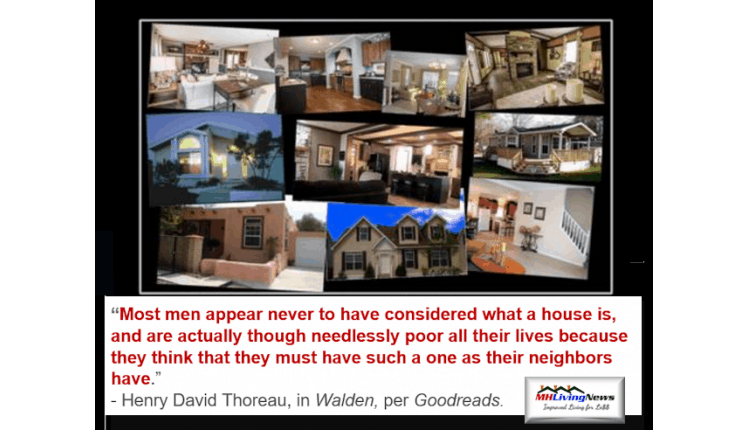
There are a number of professionals active in the industry today who are well aware of these factoids. Some were suppliers, lenders or financial services firms, some were colleagues, while others were competitors.
AB and the now equally defunct Manufactured Home Merchandiser Magazine each featured reports with photos on Kovach and his team’s retail success. The Colorado manufactured housing association, citing one such report during that time, pointed to Kovach’s accomplishments during a down market cycle in the industry. A Canadian association asked him to be their keynote speaker. Why?
Perhaps in part to inspire others.
Because at that time, some 80 percent of the other independent retailers in that state failed in the then post-oil-boom bust and subsequent repossession glut Oklahoma. By contrast, Kovach’s retail location was growing year over year and thriving. Kovach always notes that such successes are a matter of teamwork.
As he also says, while there were a few tussles with this or that supplier at times, but most companies enjoyed working with him. Those tussles were all successfully and favorably resolved. With several years in business, Kovach says with some pride that his location never had a single call or letter from an attorney on behalf of an irate consumer, much less a lawsuit by a consumer. That is his indirect way of noting that customer satisfaction was high.
But the direct evidence of high satisfaction was that customer referrals were among the top sources for new buyers.
Referrals weren’t the only way Kovach’s team attracted new customers. They tested many things, but a key was the proper use of the telephone by well-trained sales professionals. In-bound calls were the result of that marketing. Handling those calls correctly resulted in arrivals from across the state and beyond. The sales and telephone methods utilized were unlike others in the industry. But as the published record previously cited reflects, those marketing and sales methods proved successful.
“While the rising tides can raise all boats,” says Kovach about a well-known maxim, “the falling tide can arguably reveal which boats are in deeper water or otherwise are more sea worthy.”
Fast forward. Some years later, a Clayton Homes regional during a meeting some years ago suggested to Kovach that he ‘lose’ those gold chains. He listened, pondered a moment, and removed them. Kovach has only rarely worn them since. He believes that learning and a certain type of evolution should routinely be occurring. It wasn’t like gold chains were a permanent fixture for him anyway. “They were a statement, like a man’s diamond ring, or a handsome tiger’s eye mounted on a man’s gold ring,” said Kovach.
Another successful consultant he worked with in Texas called him ‘Tony the marketing tiger.’ Hmmm, okay. Those items of male jewelry were placed in a safe box, now only rarely bought out by Kovach.
The Entrepreneur’s Creed
Sam Walton had an entrepreneurial creed that for a time became quite popular. Here it is.

I refuse to barter incentive for a dole; I prefer the challenges of life to the guaranteed existence; the thrill of fulfillment to the stale calm of utopia. I will not trade freedom for beneficence nor my dignity for a handout. I will never cower before any master nor bend to any threat.
It is my heritage to stand erect, proud and unafraid; to think and act for myself, to enjoy the benefit of my creations and to face the world boldly an say: ”This, with God’s help, I have done.”
All this is what it means to be an entrepreneur.” – Sam Walton
Walton’s success is well known. His Entrepreneur’s Creed considered, let’s plunge back into MHVille, current realities, and possible lessons learned worth pondering during a Labor holiday weekend.
The State of the Manufactured Home Industry in 2019?
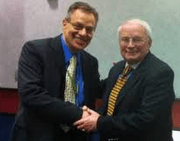
“The manufactured home industry has perhaps never been better poised to return to greatness and exceed its past glory days,” says Tony Kovach. “But it will only do so when enough independents tap into the opportunities available at the local market level.
Independents and investors must learn how to successfully reach out to people from a range of backgrounds, many of whom are not actively considering a HUD Code manufactured home. Learn how to connect and persuade them to seriously consider what our industry offers today.
You don’t have to exaggerate or pressure people in order for them to look or buy. But of course, you do want to ask for and earn their business in an ethical fashion. Learn how to listen carefully, observe, and then serve prospects honestly, fairly and well. Doing business the right way during an affordable housing crisis could lead those outside looking into manufactured housing to come to believe that it could be almost like legally printing money. It’s the sustainable, ethical path to long-term growth. Don’t over promise, don’t exaggerate or under-deliver. Such pragmatic methods are how a healthy, long-term vision can arise that can separate those who survive, from those whose operation’s died, or those who thrive.”
Of course, there is more to his proprietary methods than those points, as important as they are.
Let’s note before moving on that Kovach profitably sold his retail center after a raft of positive publicity and he retired as a young man.
But he was restless, did writing, and then consulting. Some of those articles were for the now defunct Manufactured Home Merchandiser Magazine. For those MH Industry veterans who have old copies of the Merchandiser laying around in a box or shelf, why not take a look?

Fast forward to today, and Kovach’s operation is now coming up on the tenth anniversary of publishing the runaway most-read trade media in all of manufactured housing, MHProNews. Among the accomplishments he’s been credited with, along with others, is saving the Louisville Show from extinction after years of declines which ended in the cancellation of the show in 2010.
What was the only thing different in 2011, the year the show made its come back from dead? The promotion and education by Kovach and the MHProNews team.
Rival publisher George Allen, introducing Tony to a packed room of attendees in 2011 said while pointing to himself and another colleague of Allen’s – ‘We are the past and the present, but you guys [pointing to Tony and an MHProNews colleague] are the future of manufactured housing.’ Allen is unlikely to deny what was caught on video and was said in front of so many industry professionals.
Bob Thieman who had a role in that Louisville Show said similarly via LinkedIn.

Ironically, now-rival Darren Krolewski, a few years prior to that – while Krolewski was an independent consultant with his father, B. J. Krol, did a third-party evaluation for an independent manufactured home producer. The subject of their research was a comparison of two different multiple community territories, with Kovach and this writer at one set of land-lease communities, while another area manager was involved in another set of communities for the same company. Each had similar products, financing, or others circumstances. They were in the same state. But the results between the two were dramatically different, which is why the HUD Code builder likely commissioned the study.
Kovach was brought in to recharge that land-lease community operation which for years prior to his arrival had been sliding backward in occupancy. Sales were in decline. For years, only used homes were being sold at cheap prices, to keep the ‘site rent meter going.’ But Kovach’s marketing methods and sales coaching caused new home sales to surge to life and used home sales rose too, both at greater margins. “I don’t believe in giving product away at little or no profit to fill a vacancy,” Kovach said.
After Krol and his son made their observations, interviewed several people, he said in writing that Tony Kovach’s methods were “light years ahead” of others whose work he had seen. Krol went on to work for other communities.

Krolewski’s and Krol did a more detailed written report for that independent factory-builder, which compared Kovach’s region with that other area manager’s. That detailed report glowed too. The father and son said in their findings that the spark plug for the turnaround that took place in just 9 months was Kovach. Kovach dismissed some team members he felt were problematic, recruited others, and/or recharged those who remained. Previously unhappy residents became happy. That was a measurable result, because resident referrals that were previously completely absent rapidly became the #2 source for new sales.
Krolewski and Krol’s report pointed to Kovach’s methodology and the positive changes made. That firm’s president wrote a glowing letter of recommendation for Kovach. It is one of several from successful projects in manufactured housing.

Some details of that or other projects in retail and communities before or since may be covered at a future date and time. Why? Because they relate to attracting positive media, positive resident and customer reviews, and ‘attraction’ marketing and selling that are much needed in manufactured housing today. It is worth noting that another positive outcome from that turn-around that Krolewski’s and Krol’s report for that factory documented was a surge of positive earned, unpaid, third-party media. Those positive articles about locations under his supervision were placed on a marketing website. They generated leads and sales to well-qualified customers.

Some sense of those ever-evolving methods in more recent projects done by our business development unit are found in the report linked below, or the comments from others found on the page linked here. “We not only help locations get genuine interviews with happy customers on video, but we have such positive video comments from others ourselves,” says Kovach. “When you practice what you preach, and can show consistent results, it is more impressive than just mere words, isn’t it?”
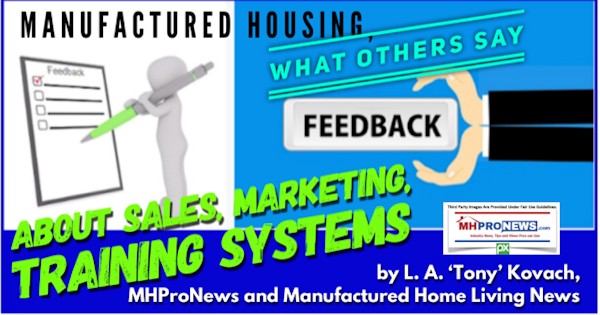
That said, Kovach points to certain firms and locations which are in their own right growing while the industry is overall in this modest shipment decline, which he says is completely avoidable.
One example of a company that is bucking the trends was detailed yesterday in a detailed report, linked below. Another example previously reported was about Nobility Homes in July 2019 is linked here. There are others. “When someone else is able to accomplish something, can-do personalities say, ‘I can accomplish that too.'”
With points like those noted in mind, multiple award-winning publisher and consultant Kovach said this.

It’s arguably a mistake to follow leaders in the Omaha-Knoxville-Arlington axis, who have only led the industry into over 15 years of depressed results. The axis may have consolidated and grown their Moat, while others have been failing. Coincidence?
Good pictures, nice websites, or fine videos can be useful. But if that was enough then the industry would already be soaring in sales. Clearly, something else is needed. Only by using video, tech, websites, training or images in conjunction with pragmatic and ethical business practices will sustainable success be achieved.
That success occurs by attracting a steady stream of cash and credit worthy customers, which should increasingly come from those who only previously thought about site built housing. When customers become home owners and love what you do – something which always occurs at the local market level – and when you learn how to attract and sell that site-built customer – then you can honestly dominate your local market. When more learn to do that, sustainable and collective record-setting numbers can be achieved in manufactured housing.”
You also have to be willing to work around the challenges the so-called big boys create.

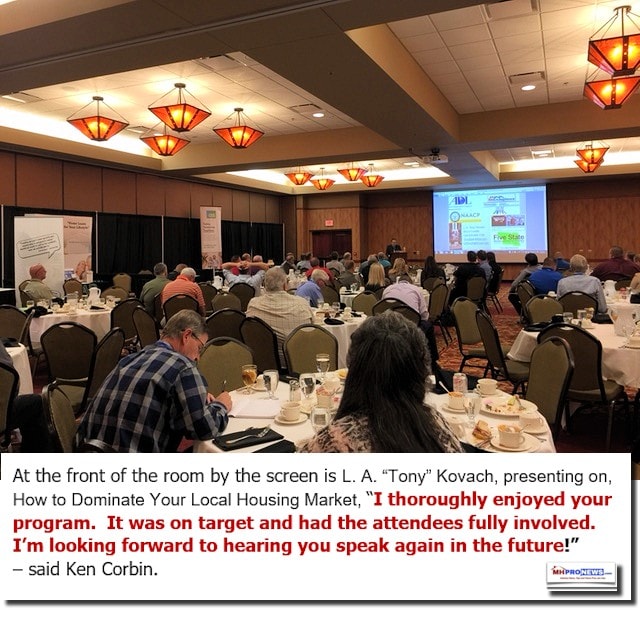
That’s very much in keeping with Sam Walton’s credo, isn’t it?
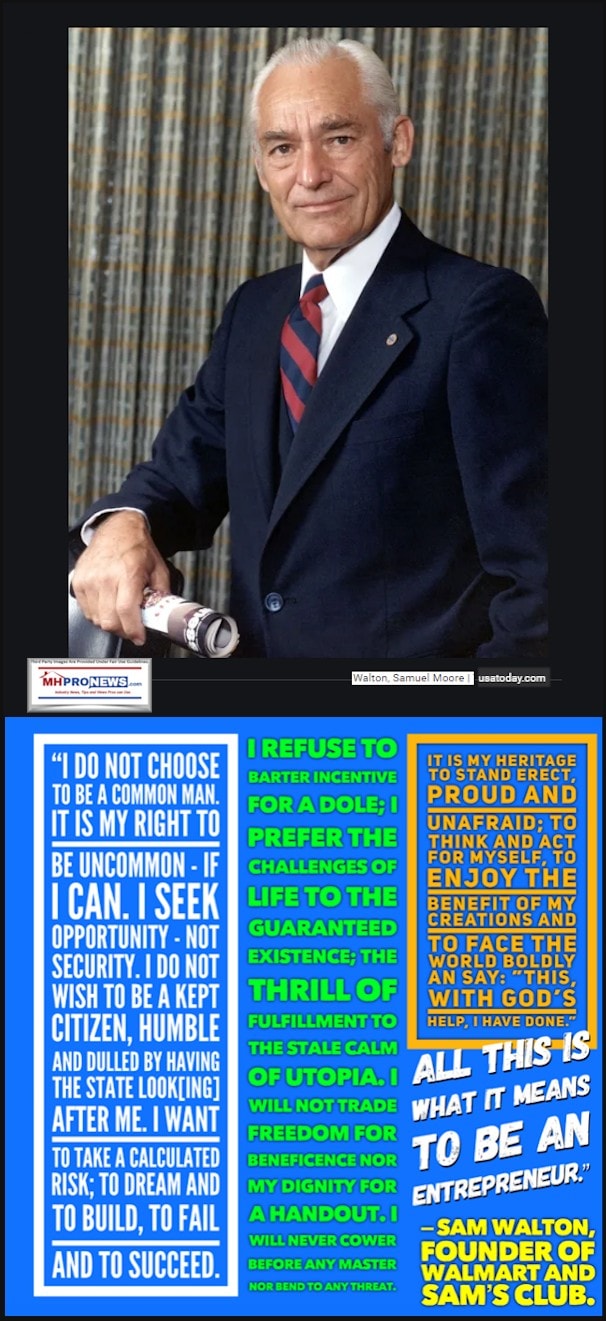
That’s your food for thought on today’s addictive installment of useful business insights, found only here on MHProNews — your home for manufactured housing “Industry News, Tips, and Views Pros Can Use,” © where “We Provide, You Decide.” © ## (News, inspiration, fact-checks, analysis, and commentary.)
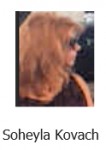
Soheyla is a managing member of LifeStyle Factory Homes, LLC, the parent company to MHProNews, and MHLivingNews.com. Connect with us on LinkedIn here and here.
Related Reports:
Click the image/text box below to access relevant, related information.
Rocking Manufactured Housing Shows, Events, and Marketing Promotions
